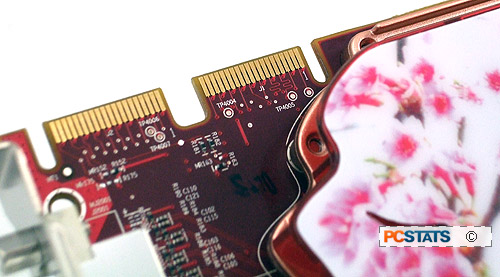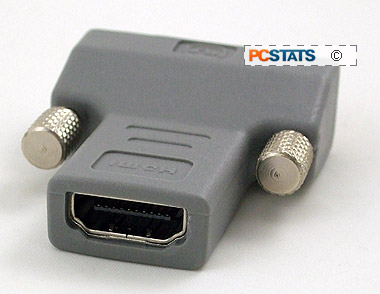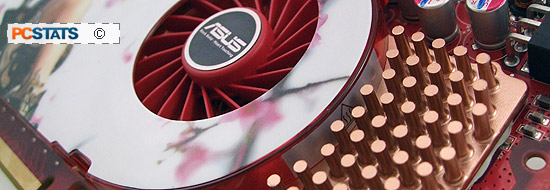While we didn't get a chance to test this Asus
EAH4850 in Crossfire, AMD's new update to its multi-gpu technology does deserve
some attention.
|

ATI employ two flexible flat-wire
Kapton cables between each of the videocards' Crossfire connectors. Both
bridge connectors must be used in order to take advantage of ATI's
CrossFire technology.
|
AMD's Crossfire has steadily improved in performance and compatibility
since it was first introduced with the Radeon x850 GPU. While older Crossfire
versions required a tricky master-slave card scheme in order to function
properly, the current version of Crossfire X is much more user friendly, and is
supported on most of Intel and AMD's new chipsets. Crossfire X can be scaled
across as many four GPUs, although quad-Crossfire adopters might want to be
warned this rarely if ever gives linear performance scaling, as we've
demonstrated in previous reviews.
AMD Radeon HD 4850 Core Technology 
Unlike complex multi-gpu Radeon graphics cards, the Asus EAH4850 videocard is a simple affair - it features a single Radeon HD 4850 GPU, code named RV770.
The RV770 graphics chip is built on a 55nm process, packing 965 million transistors into the space the size of a dime. The shift in architecture from the R600 series of GPUs means that RV770 will run cooler and consume less power, which in turn lets AMD's engineers turn up the overall performance. It also means that there are now 800 stream processors on board (up from 320 in the Radeon HD 3870), and 40 texture units (up from 16).
The Radeon HD 4850 videocard uses DDR3 memory on board, which is actually a small step backwards from the GDDR4 they introduced on certain cards from last generation - this was done in large part due to the poor yields and high cost of producing GDDR4 memory. Newer GDDR5 memory technology will be making its way into the Radeon 4000-series and its successors in 2009.
ASUS' EAH4850 videocard comes with a DVI-to-HDMI
adapter, and we plugged it in to test out our card's Avivo HD technology. Image quality was outstanding, with support of H.264 and VC-1 hardware decoding, as well as HDCP compliance. The HDMI output also carries 7.1 channel audio, making it a great alternative if you're gaming on an HDTV or simply want to output movies from a Blueray DVD drive to your big screen.
Heat and Noise Observations
The single fan on the ASUS EAH4850 videocard spins up quickly on and squirts out a puff of air on boot up, but then settles downs to a whisper. Even under full load, the fan is relatively quiet - not much louder than the new Intel Stock Cooler for the 45nm CPUs.

The videocard runs at idle around 76 degrees Celsius and under full load hits the high 80Cs. Unfortunately, the videocard vents hot air out through its sides, dumping it back inside the case. For those with cases that don't ventilate well, adding a rear or side panel exhaust fan can help clear out some of the ambient heat that will build up around the video card.
